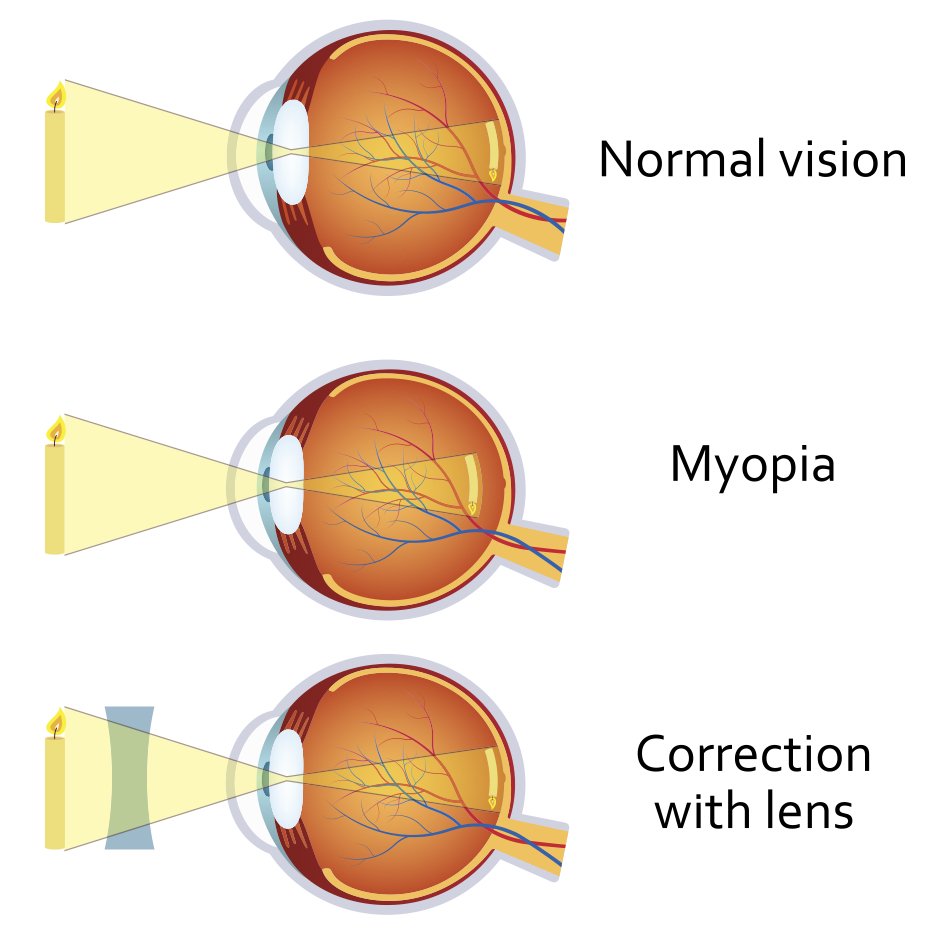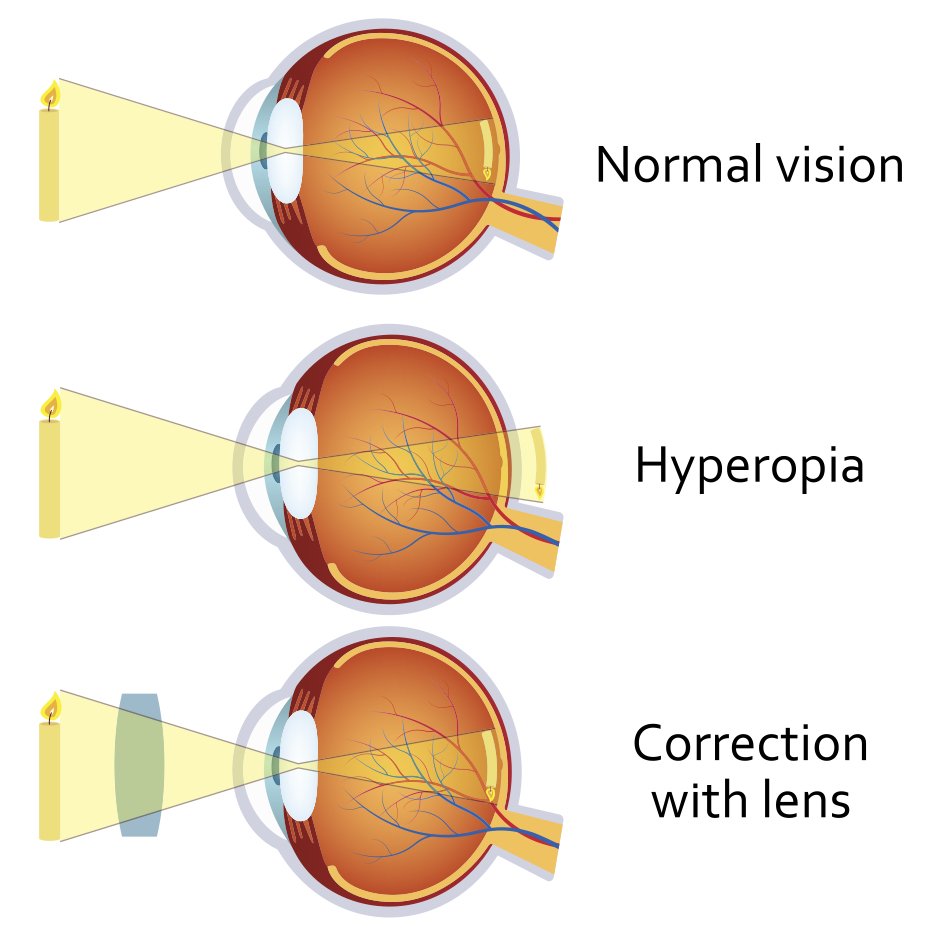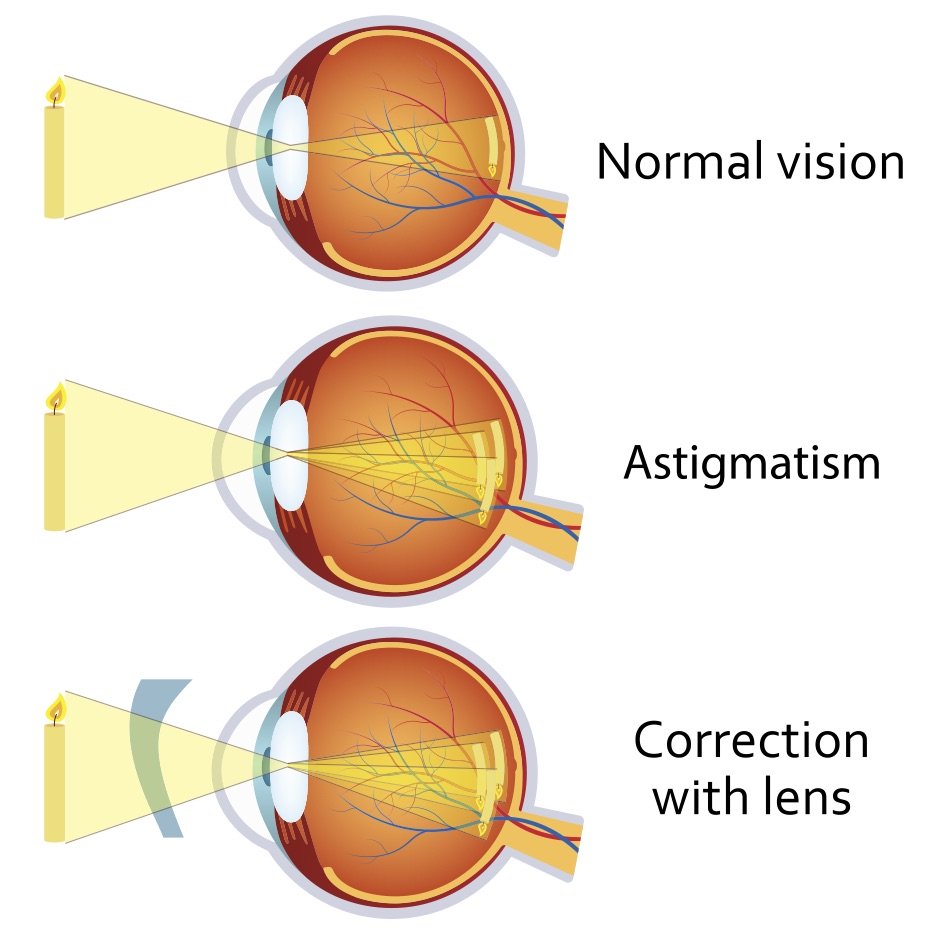If you have blurry vision, it possibly due to one of these conditions:
They are common problems that cause vision of near and/or distant objects to be blurry. Around 93% of Australians over 55 have at least one of these conditions.
The good news is they’re easily and effectively treated by an optometrist. If you feel your vision could be clearer, why not book in for an eye test?
If you start to experience any of the symptoms mentioned, we recommend you make an appointment to see our Optometrist for a comprehensive eye exam.
Short sightedness is when you can see near objects clearly, but anything more than a few meters away is blurry – such as street signs and television screens.
It happens because the focal point is converging in front of the retina, rather than at the retina – a condition known as Myopia.
It is easily treated using a concave lens in glasses or contact lenses. The lens pushes the focal point back to the retina, giving clear vision.


Long sightedness is when you can see distant objects clearly, but anything within arm’s reach is blurry – such as a book or phone.
It happens because the focal point is converging behind the retina, rather than at the retina – a condition known as hyperopia.
Hyperopia has similar symptoms to presbyopia, but is caused by the eye being too short or not having strong enough focusing power. Presbyopia occurs as eyes grow older. Hyperopia can occur at any age.
A convex lens in glasses or contact lenses is used to bring the focal point back to the retina, giving clear vision.
If you’re experiencing any of the symptoms, book an eye test so you can get on with seeing things clearly.


Astigmatism is a condition that causes blurry vision at all distances. It can also cause distorted or ghosted vision, as seen in the image of the stop sign.
It occurs when there are irregularities in the curvature of the cornea, the surface of the eye. This impacts the way light passes through the eye to the retina, as demonstrated in the diagram.
The condition can be corrected for using glasses or contact lenses. The lenses will bend the light back to the retina – providing clear vision.
Astigmatism is reasonably common, affecting at least 1.4 million Australians and needs to be treated by an optometrist or ophthalmologist.
Our team are highly experienced in treating this condition. We will also assess your condition to determine if you could benefit from surgery or laser treatment, and will refer you to the appropriate ophthalmologist if needed.





Everyone between the ages of 40 and 65 is experiencing some form of presbyopia.
Presbyopia is when the eye losses its ability to focus quickly on close objects. It occurs as the eye ages, from 40 onwards.
The lens in the eye becomes less flexible which impacts its ability to bend light properly, resulting in blurry near vision.
Some people will experience presbyopia earlier than others. Some will notice a sudden change while others will experience a gradual decline in their near vision.
Presbyopia is easily fixed with the correct pair of reading glasses. People are always amazed just how much difference their new glasses make, especially those who have experienced a gradual decline in their vision and have been compensating and adjusting for several years.
If you’re noticing a change in your near vision, it’s probably time for an eye test.
Your arm can only stretch so far, and you don’t need to keep putting up with blurry vision.



Monday 9am–5:30pm
Tuesday 9am–5:30pm
Wednesday 9am–5:30pm
Thursday 9am–6:00pm
Friday 9am–5:30pm
Saturday Closed
Sunday Closed